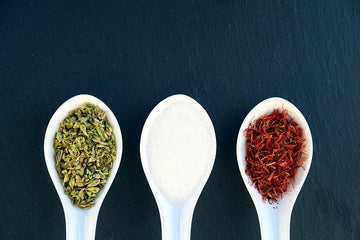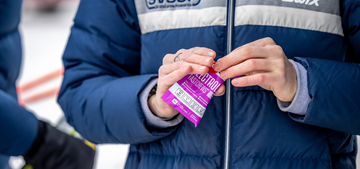
 Learn how proper electrolyte consumption can help prevent the “keto flu” and aid your dieting success.
In recent years, the ketogenic diet has exploded in popularity, with adherents sharing stories of higher energy levels, successful weight loss and improved focus. Relying on an extreme restriction of carbohydrates and proteins, the diet promises to train the body to utilize ketones for fuel, as opposed to glucose, which many believe is prone to causing mood swings and hunger cravings.
Whether the ketogenic diet is right for you will come down to your individual preferences and experience. If you decide to take the plunge, however, you will quickly discover that mineral consumption is a key element of your success.
Anyone who has researched the diet likely knows about the “keto flu”—a two-to-three-week adaptation period that features low energy, brain fog, sore joints and headaches. Some dieters say they feel as if they have been run over with a train.
And yet, others seem to have no issue at all. Diet experts have known for a long time that the less burdensome the diet, the more likely you are to be successful. Thus, minimizing the “keto flu” is crucial to achieving your keto goals, whether that is weight loss, better focus or improved health.
What is the secret? Salt. Or more specifically, a balanced consumption of important minerals, such as sodium, potassium and magnesium.
Learn how proper electrolyte consumption can help prevent the “keto flu” and aid your dieting success.
In recent years, the ketogenic diet has exploded in popularity, with adherents sharing stories of higher energy levels, successful weight loss and improved focus. Relying on an extreme restriction of carbohydrates and proteins, the diet promises to train the body to utilize ketones for fuel, as opposed to glucose, which many believe is prone to causing mood swings and hunger cravings.
Whether the ketogenic diet is right for you will come down to your individual preferences and experience. If you decide to take the plunge, however, you will quickly discover that mineral consumption is a key element of your success.
Anyone who has researched the diet likely knows about the “keto flu”—a two-to-three-week adaptation period that features low energy, brain fog, sore joints and headaches. Some dieters say they feel as if they have been run over with a train.
And yet, others seem to have no issue at all. Diet experts have known for a long time that the less burdensome the diet, the more likely you are to be successful. Thus, minimizing the “keto flu” is crucial to achieving your keto goals, whether that is weight loss, better focus or improved health.
What is the secret? Salt. Or more specifically, a balanced consumption of important minerals, such as sodium, potassium and magnesium.
Why your body loses salt on the ketogenic diet
When we consume carbohydrate, our bodies convert it into glucose, which is absorbed into the bloodstream and moved to the cells that require energy. This process is aided by the hormone insulin, which helps keep glucose levels balanced. Insulin also helps the body reabsorb sodium, which is essential for a number of physiological processes, ranging from blood pressure stabilization to sweating. The body only releases insulin when glucose enters the bloodstream. In individuals who consume a normal amount of carbohydrates—that is, not too high or to low—insulin levels will remain at a healthy level throughout the day. As a byproduct, this process helps regulate sodium levels, provided sodium consumption is also normal. Potential issues can arise from the extremely low consumption of carbohydrate in individuals who adhere to a ketogenic diet. Without sufficient levels of glucose, the body will not release much insulin, which interrupts the sodium absorption process and inadvertently flushes too much sodium from the body through urination. As levels of other electrolytes are influenced by the blood levels of sodium, this has a domino effect that results low mineral levels overall.Sodium
A debate remains about the appropriate level of sodium consumption required for good health. Standard Western diets tend to include high amounts of processed foods, which are packed with sodium. However, most keto-friendly foods are made from scratch, and often, keto newbies leave out the salt—due to their renewed focus on following a healthy diet. This can cause them to overshoot the mark and consume too little sodium, even by recommended standards. Despite well-intentioned messages to eat less salt, sodium is not inherently “bad.” Our bodies require it to stay alive, and it only causes problems when we consume it in excess. Additionally, as described above, keto fans are more prone to flushing large amounts of sodium from their bloodstream due to low insulin levels. As we note in a former blog post, low sodium levels can be uncomfortable, painful and even dangerous. Headache and fatigue are the most common side effects, but in extreme cases, low sodium can result in nausea, unconsciousness or in the worst case, death. The more serious side effects are unlikely to result from following the keto diet, but proper sodium consumption could ward off any side effects altogether.Potassium
Potassium levels are inherently tied to sodium levels in the body. These electrolytes work together to manage blood pressure and deliver nutrients to the cells, and several studies have shown that one solution to high sodium levels is to simply consume more potassium in the form of fruits and vegetables. This means that when sodium levels drop, potassium follows suit. And just like sodium, low potassium levels can result in some pretty nasty side effects, including fatigue, cramping and constipation. Avoid this outcome by keeping potassium consumption in check.Magnesium
In the athletic world, many nutritionists point to low magnesium as the most likely cause of muscle cramps. This is because magnesium plays a key role in transmitting neural impulses to the muscle cells, and low levels cause the process to break down. Compared to sodium and potassium, your magnesium needs are less likely to be altered on a ketogenic diet. However, magnesium can be hard to obtain from natural foods, and up to 57 percent of U.S. adults don’t get enough of it, according to one study. If you find that your muscles twitch late at night or cramp during the day, low magnesium could be to blame.Avoid the “keto flu” by ensuring your electrolytes stay balanced
In summary, when electrolyte levels drop, you can be left with headaches, nausea, fatigue, mental fog and low energy—classic “keto flu” symptoms. Due to the way the ketogenic diet affects your hormones, you will be uniquely susceptible to low mineral levels if you do not take extra precautions. Sodium, potassium and magnesium may be obtained through diet; however, many keto fans prefer supplementation to ensure they get enough. This is especially true for athletes who have higher electrolyte needs than their sedentary counterparts due to increased sweat levels.Each SaltStick Capsule contains 215 mg of sodium, 63 mg of potassium, 22 mg of calcium and 11 mg of magnesium. Equally important, SaltStick does not contain any sweeteners—natural or artificial—making them keto-approved. Additionally, if you find caffeine helpful in maintaining energy levels, you might consider SaltStick Caps PLUS, for an added boost. Each capsule contains 30 mg of caffeine. If you have found success on the ketogenic diet with the help of SaltStick, let us know on social media by clicking one of the links below. We might send you a free bottle as a thank you! Twitter Facebook InstagramWith a product like SaltStick, you will have the benefit of knowing exactly how much salt you are adding to your diet—removing unnecessary guesswork and keeping the “keto flu” at bay.
Tags:








